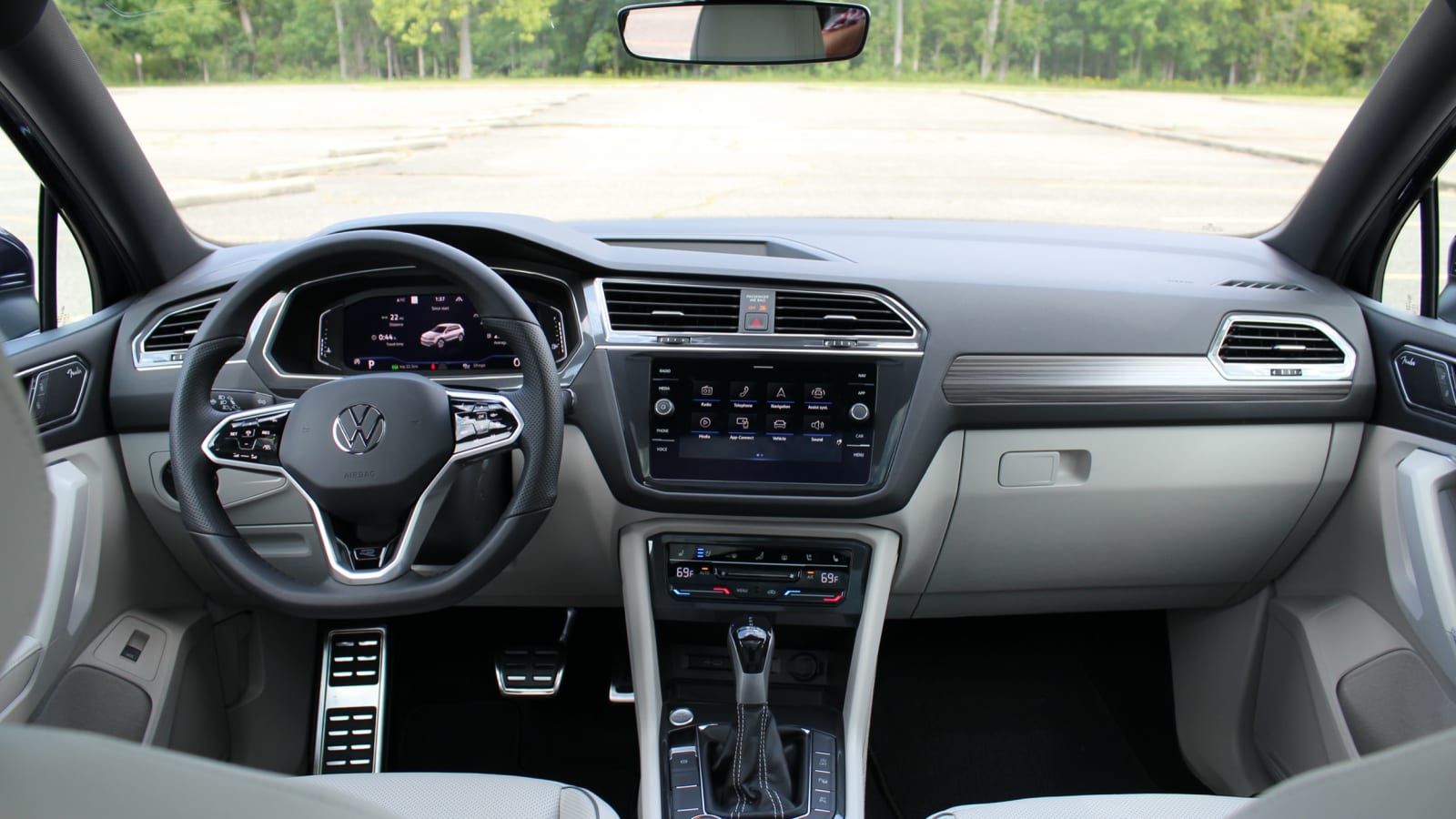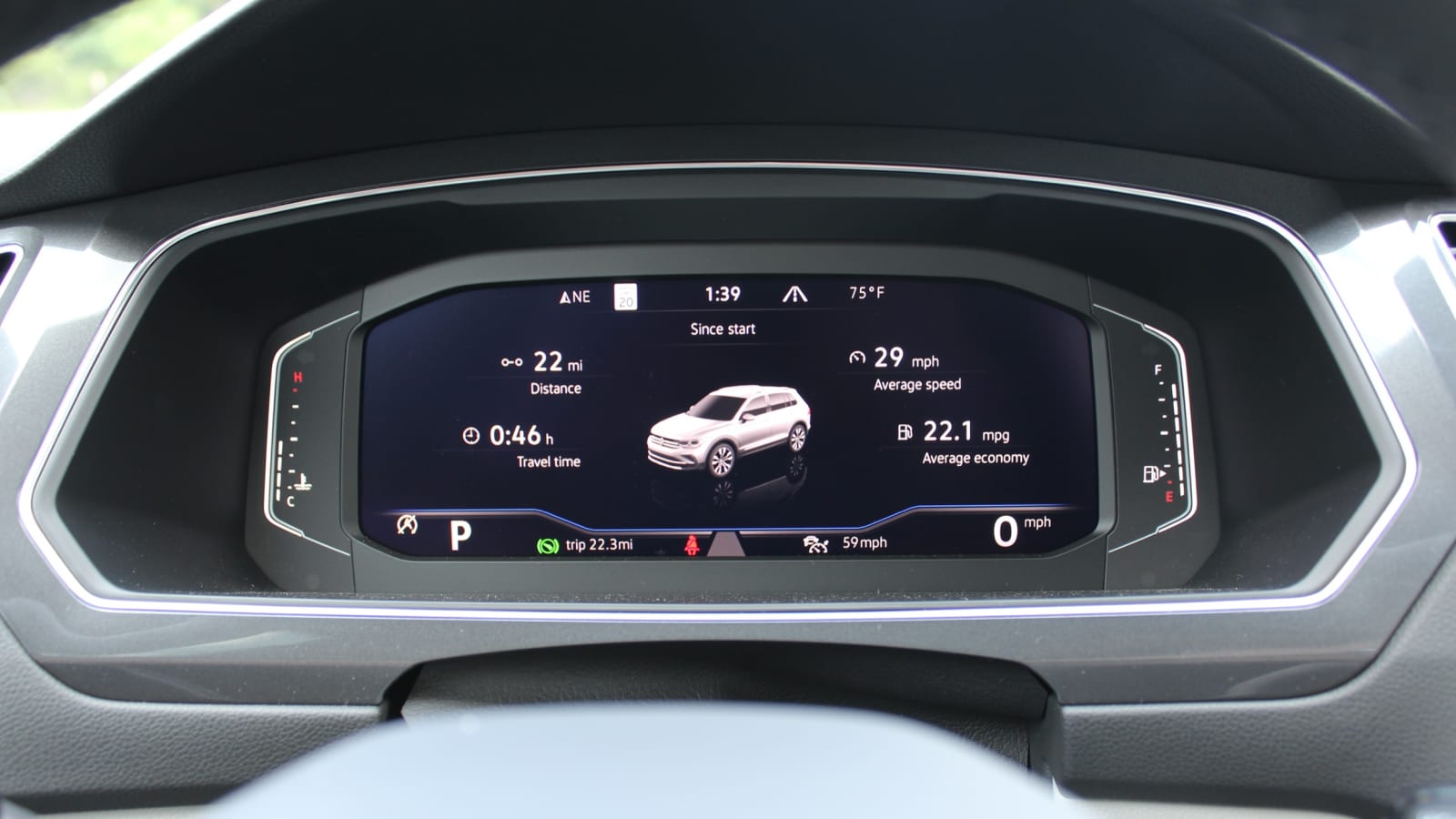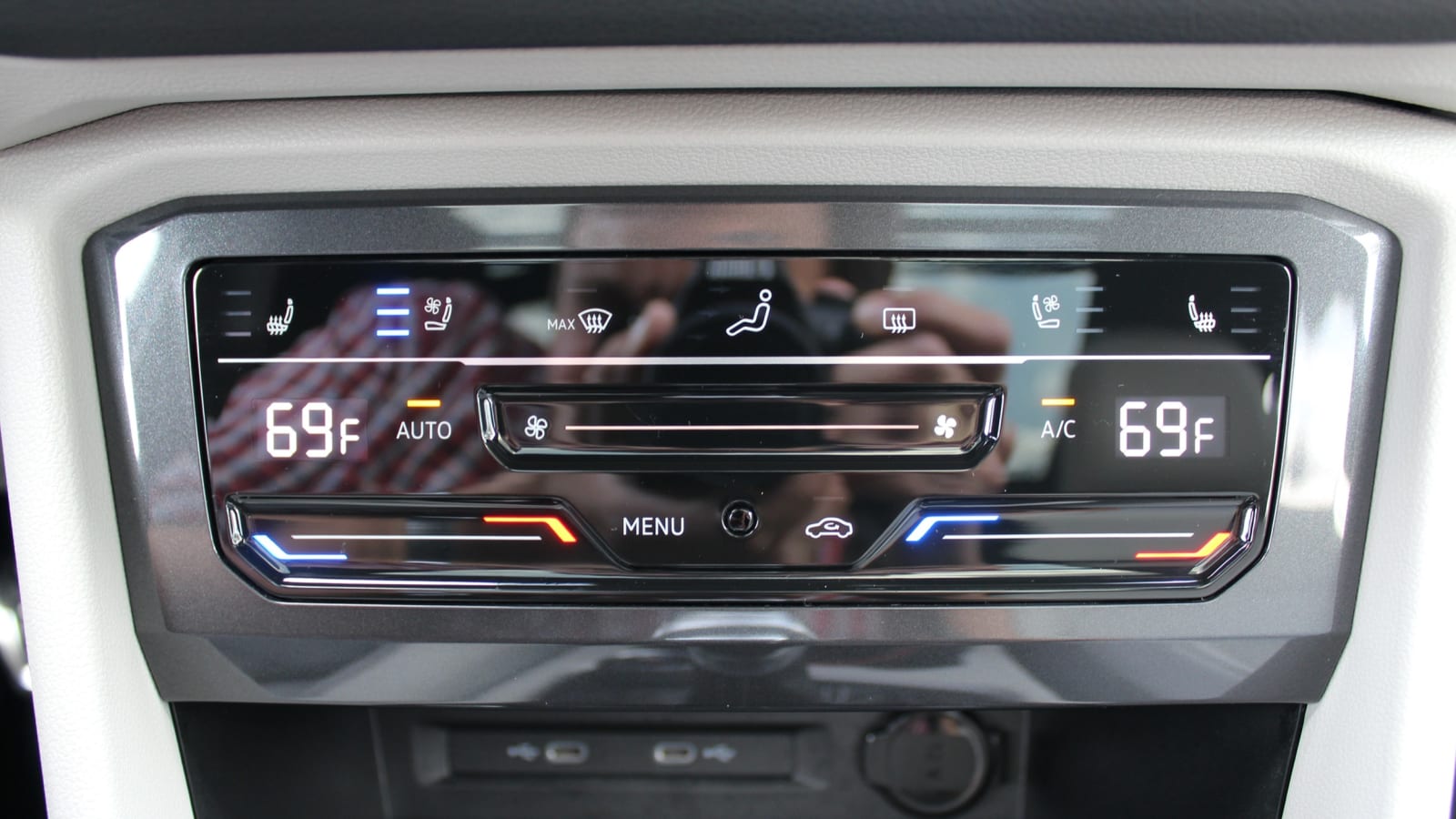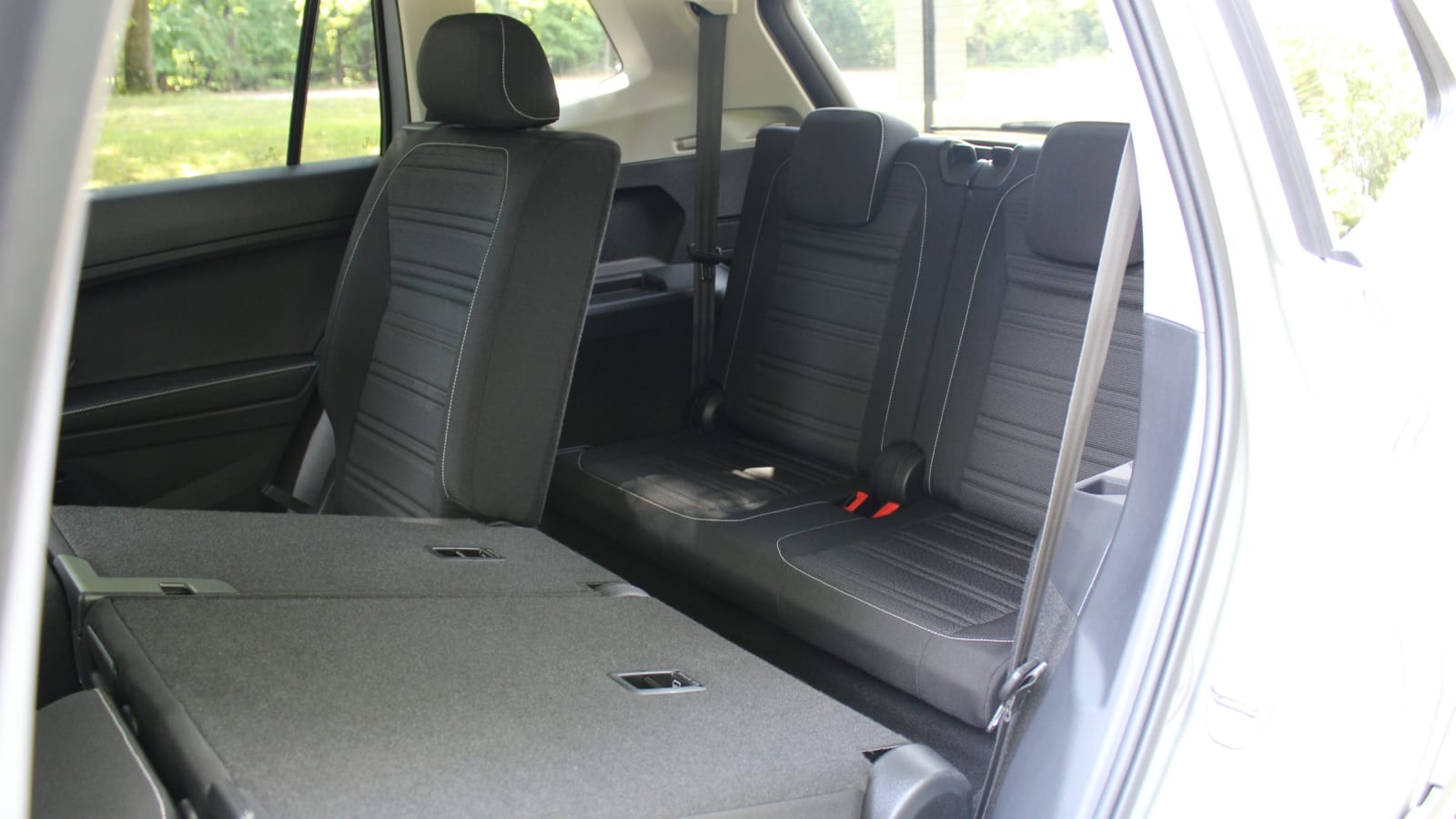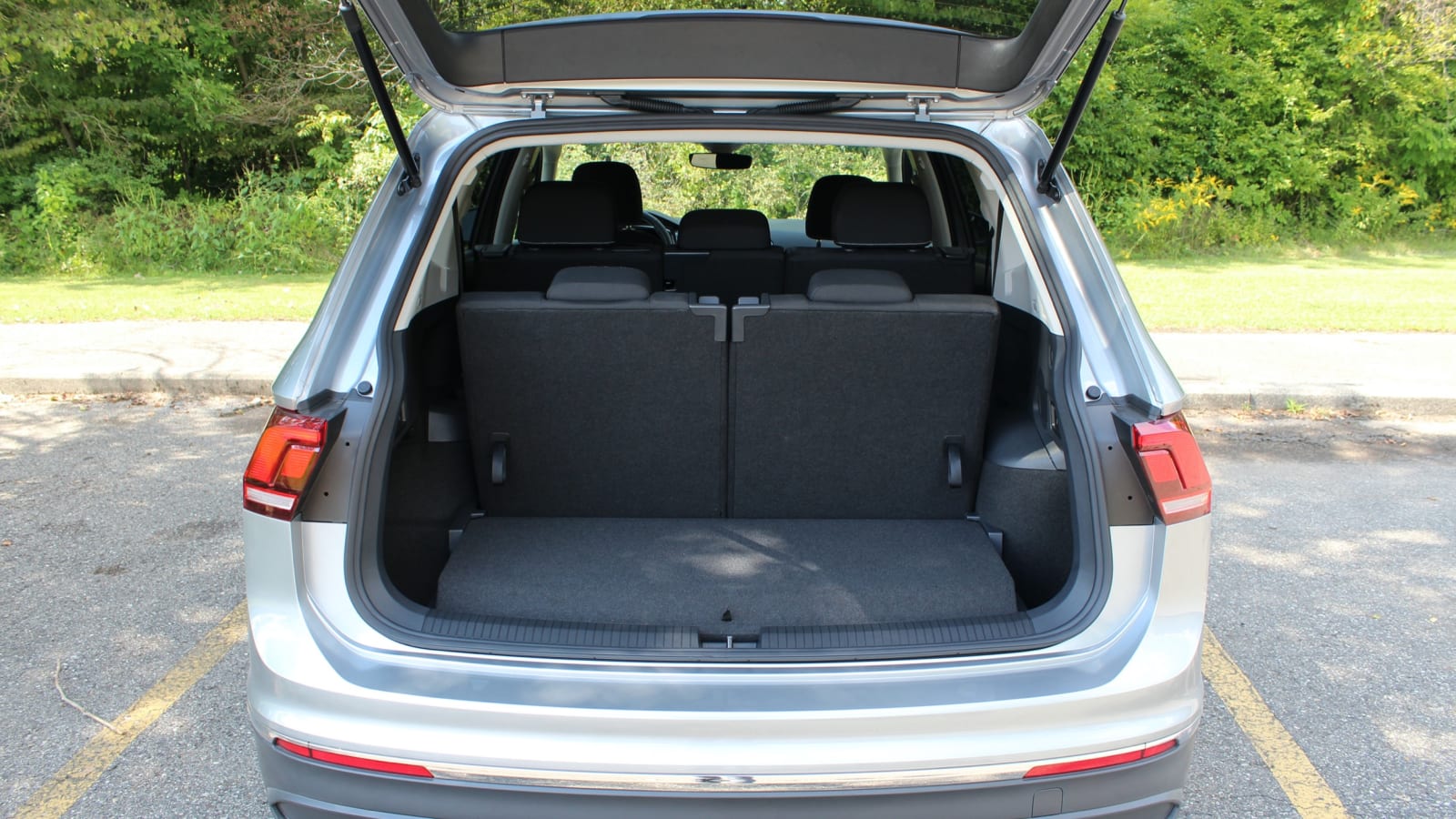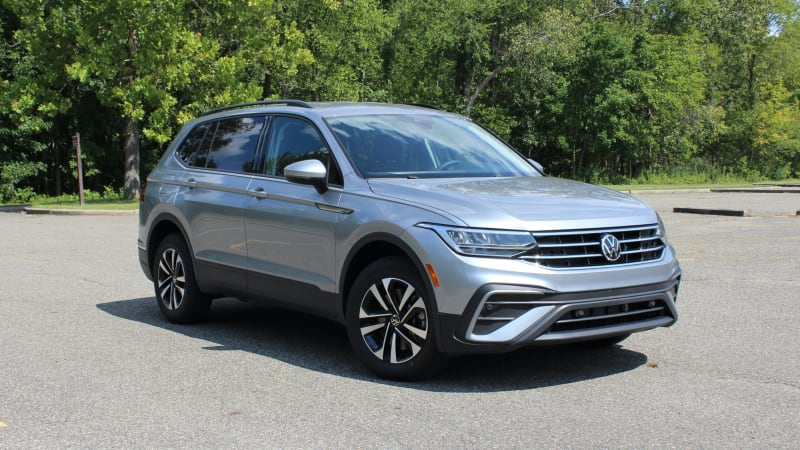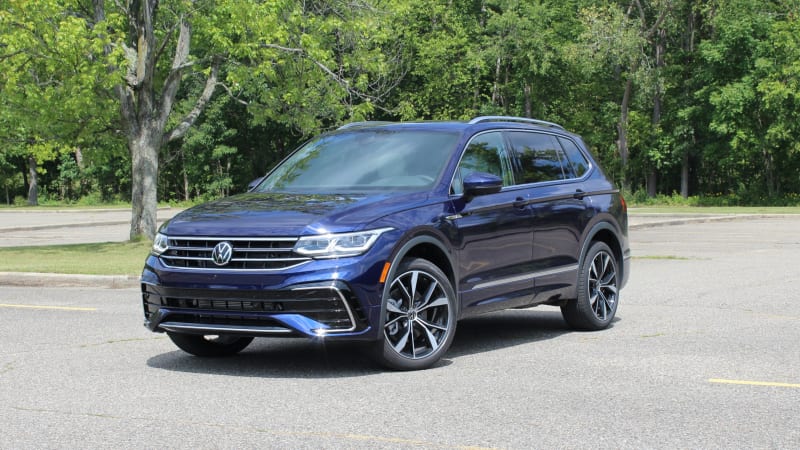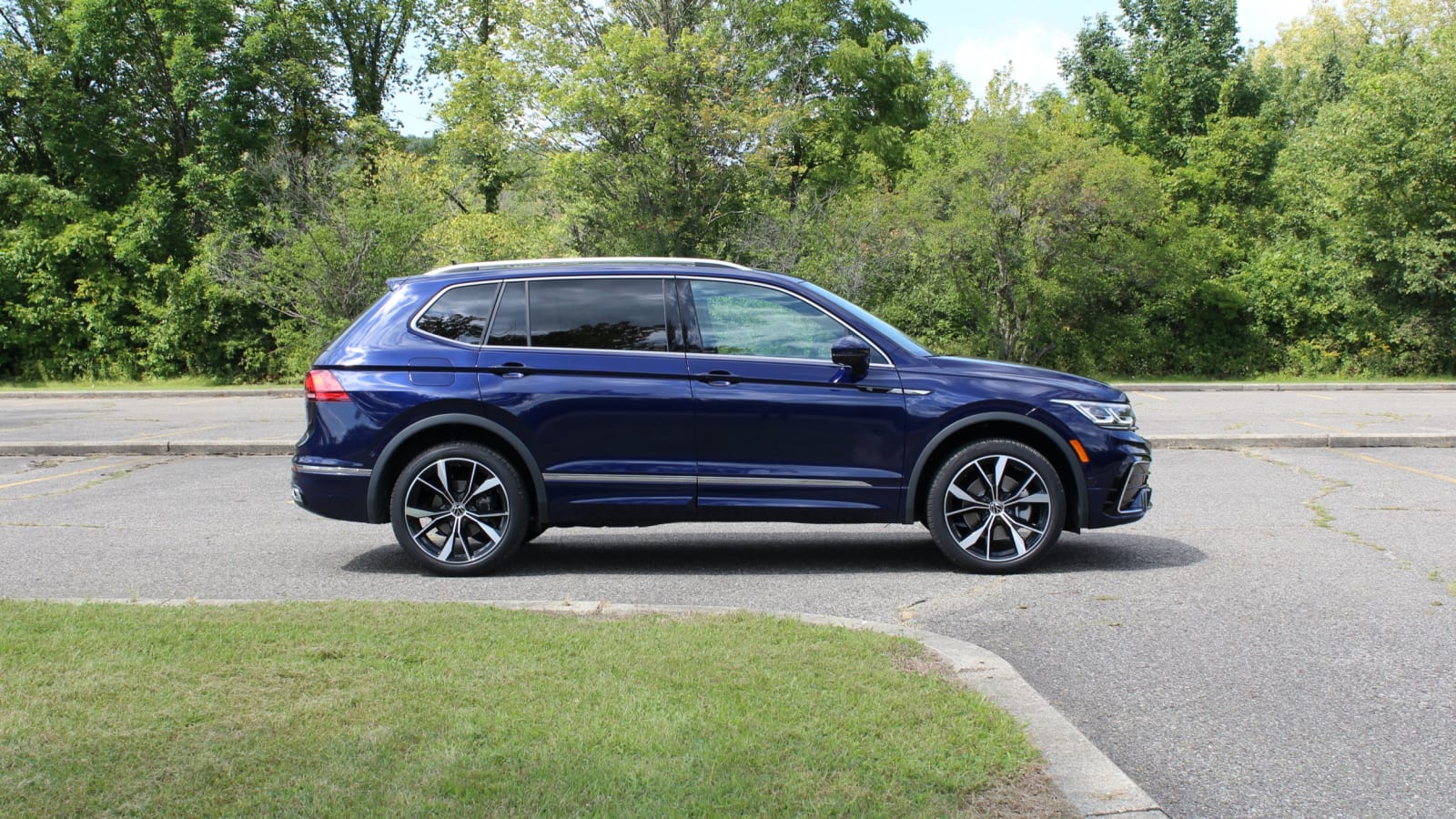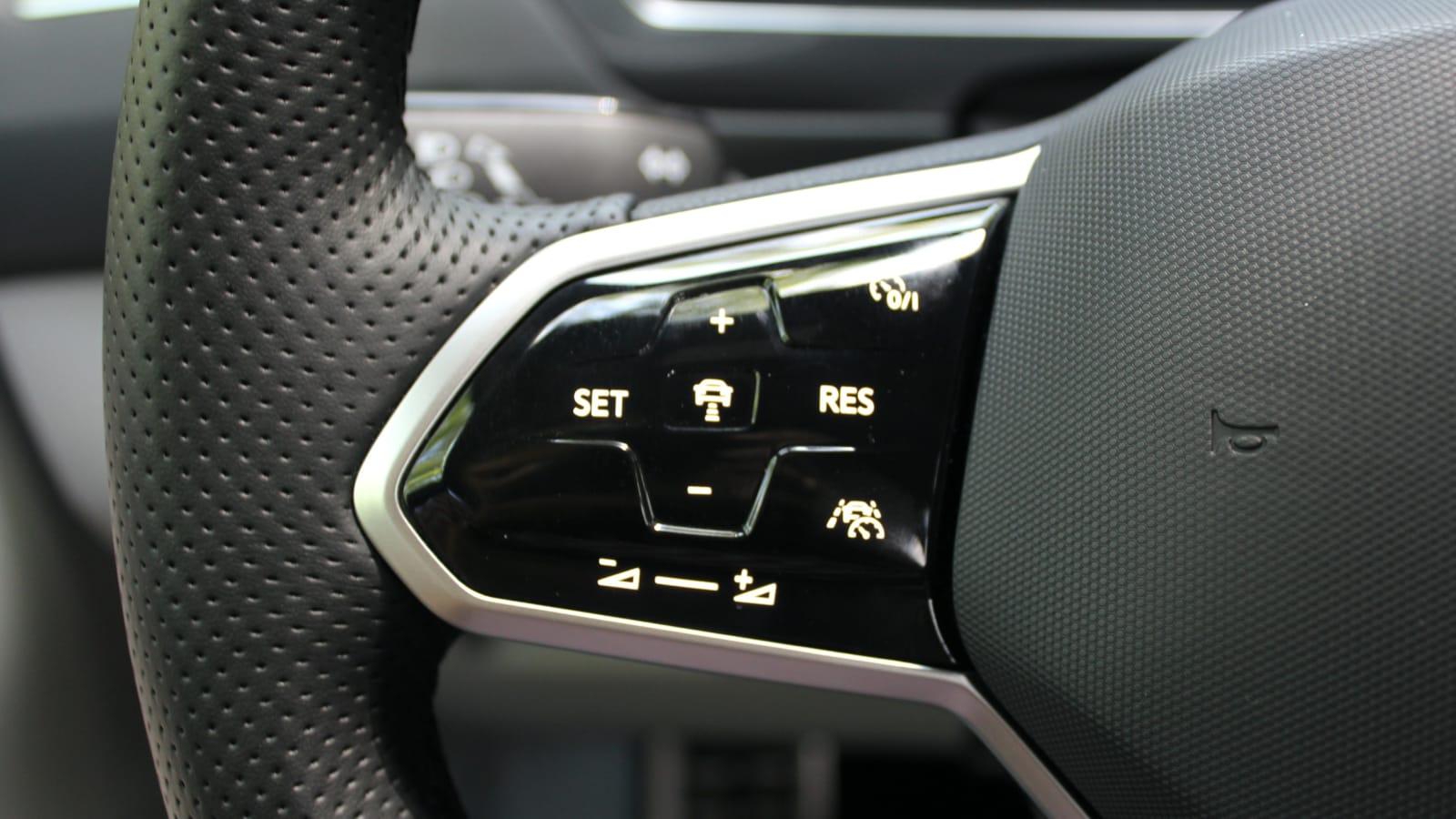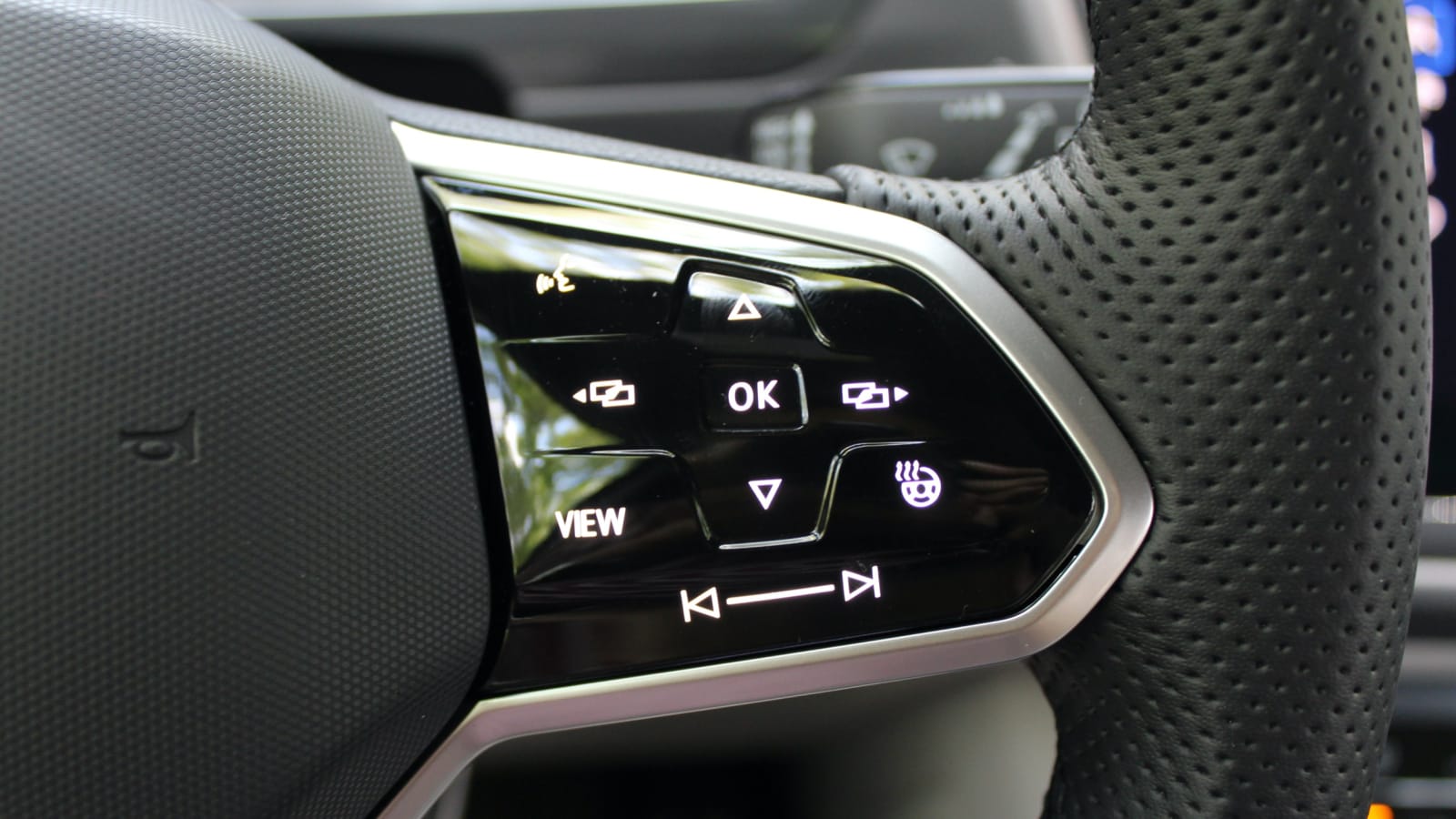The 2022 Volkswagen Tiguan is the company’s most popular nameplate, both here in the U.S. and abroad. It’s one of the few compact SUVs that offers a third row of seating, small though it may be. As a result, the Tiguan hits that sweet spot for a lot of buyers by offering loads of space without resorting to overpaying for something larger they don’t really need. It also gets a number of improvements for the 2022 model year as part of a mid-cycle update that will only help to make it more appetizing to customers.
That said, it’s not among our top-recommended small SUVs. Top rivals are more spacious, more efficient and have higher-quality interiors – a few are also more exciting to look at or drive. There’s also the matter of internal competition: there are other Volkswagens in the same size ballpark that we like better. The new Taos is excellent, and although smaller than the Tiguan, still offers family friendly space inside. Then there’s the all-electric VW ID.4, which is not only efficient, but spacious and fun to drive. If you can do without the third row, both of those other VW options are more worthy of your consideration.
Interior & Technology | Passenger & Cargo Space | Performance & Fuel Economy
What it’s like to drive | Pricing & Features | Crash Ratings & Safety Features
What’s new for 2022?
For 2022, The Tiguan gets a midcycle refresh with light tweaks to styling, tech, safety, trim lineup and pricing. As for looks, it gets revised bumpers, new LED lighting, new badge lettering, VW’s new logo and new wheel designs. Kings Red Metallic and Oryx White paint options are added to the palette.
Inside, VW did away with the analog gauges in favor of two different Digital Cockpit options. The infotainment system in the SE trim and up is upgraded to VW’s MIB3 software, and offers wireless Apple CarPlay and Android Auto. There’s also an available wireless phone charging pad. Touch-haptic controls replace physical buttons and knobs for both the climate control system and steering wheel, but don’t go as far down the button-less path as the ID.4 (for the better). All but the base Tiguan come standard with VW’s IQ.Drive suite of driver assistance equipment (more on that in the Safety section below).
What are the Tiguan’s interior and in-car technology like?
The interior is styled conservatively, but the addition of the new digital instrument panel for 2022 livens things up for the driver. Everything is easy to use and find. Material quality is going to depend a bit on how you spec your Tiguan, but be prepared to meet some hard plastics in the cabin. As expected for a crossover, the driving position is high, and visibility is phenomenal thanks to a tall roof, and low windowsills and dashboard.
All Tiguans now get a Digital Cockpit digital instrument panel, but the size differs by trim level: 8 inches standard with a 10-inch upgrade. The “Climatronic Touch” climate interface with slider controls is available, and feels like a huge upgrade to the manual HVAC dials in the S trim. You can also find touch controls on the top trim’s steering wheel. These don’t take any extra thought or attention to use compared to the traditional buttons found in the S, thanks in part to the haptic feedback they provide. The lower trims have a 6.5-inch color touchscreen (below left), but the SEL Premium R-Line gets an 8-inch infotainment system with proximity sensor and voice control (below right). Although these systems aren’t particularly flashy in appearance, they’re easy to use.
How big is the Tiguan?
The VW Tiguan is pretty big for a “compact” crossover. It’s indeed one of the most spacious in the segment and you should find more family-friendly space than in most competitors, but it’s also not a class leader in terms of rear seat or cargo room. The Honda CR-V, Nissan Rogue and 2022 Hyundai Tucson best it, while the Toyota RAV4 matches it. One Tiguan advantage, though, is the back seat’s sliding capability that lets you bring kids closer to you up front (good for wiping noses) or expanding cargo volume.
The Tiguan has another ace up its sleeve, too: a third-row seat that comes standard on all front-wheel-drive models. It’s no longer an option for al-wheel-drive versions. Although primarily intended for children, and for infrequent use, only the Mitsubishi Outlander and the slightly larger Kia Sorento offer three rows in this general size class. Note that cargo space is reduced with the third-row seat, pictured below right.
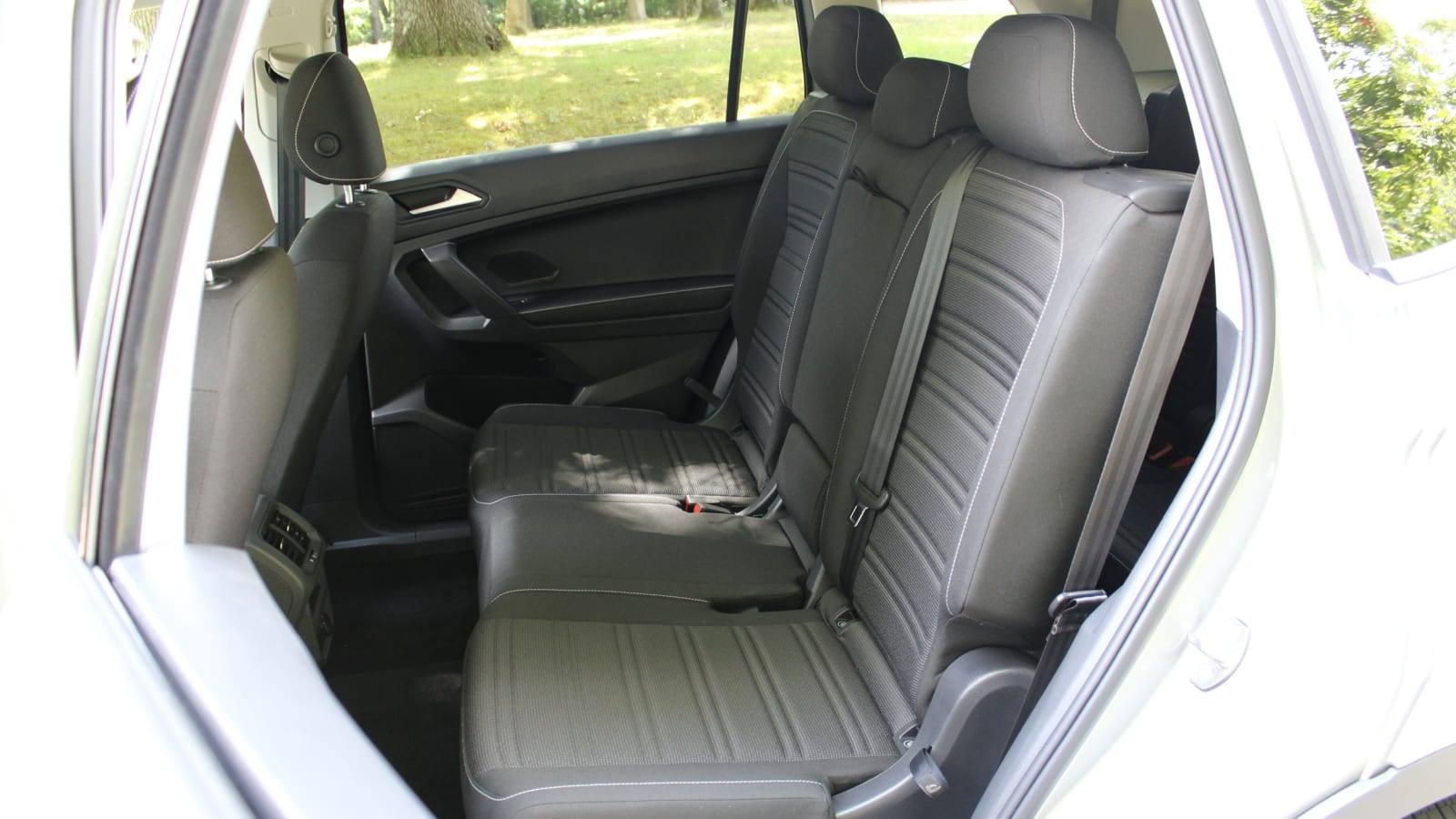
What are the Tiguan’s fuel economy and performance specs?
The sole engine option is a turbocharged 2.0-liter inline-four producing 184 horsepower and 221 pound-feet of torque. An eight-speed automatic transmission directs that power to either the front wheels or the 4Motion all-wheel-drive system available on all trims. There are no shift paddles on the steering wheel, but you can select your own gears using the manual mode on the gear lever.
Fuel economy numbers improve by roughly 1 mpg from the previous model year, thanks to some tuning updates. Front-drive models get 23 miles per gallon city, 30 mpg highway and 26 mpg combined. The S and SE 4Motion models get 22/29/25 mpg. The R-Line trims now have different figures, coming in lower at 21/28/24, presumably because of its stickier Pirelli Scorpion Zero tires.
What’s the Tiguan like to drive?
The 4Motion models feel hesitant to leap of the line. After a moment of waiting, though, you feel the initial burst of torque as the Tiguan comes to life. It’s not particularly quick, but it’s not slow either, and we don’t really see a need for more power in most locales. The engine is more eager to motivate the wheels of the front-drive versions, though the S trim we tested (above left) lacked the grip of the all-wheel-drive Tiguan SEL R-Line and its sticky Pirelli rubber (above right). This results in wheelspin — and the ensuing intervention of traction control — that seems to delay the car’s launch as much as with the 4Motion-equipped SEL R-Line.
Once under way, the Tiguan isn’t as boring to drive as its segment suggests. It’s surprisingly light-footed on more dynamic roads. Despite the light steering feel with on-center numbness consistent with most Volkswagens, we quite enjoyed flinging the Tiguan from one corner to the next as it traced the undulations in the pavement. There’s a bit of softness in the ride, which helps to filter out some of the harder bumps along the way, but it doesn’t get in the way of the Tiguan’s ability for some light frolicking.
What other Volkswagen Tiguan reviews can I read?
2022 VW Tiguan First Drive Review | Sibling rivalry
Our first drive of the Tiguan after its midcycle refresh for the 2022 model year.
How much is the 2022 Tiguan price and what features are available?
The plain SEL trim drops out for 2022, leaving four trims. The base S trim starts at $27,190, including the $1,195 destination fee, which is $750 more than the previous model year. Front-wheel drive is standard, and in all but the top trim (which gets AWD as standard), adding 4Motion all-wheel drive costs $1,500.
And while it’s more expensive for 2022, the Tiguan S also gets more standard equipment than before. The S includes 17-inch alloy wheels, LED headlights and daytime running lights, LED taillights, heated side mirrors, proximity entry and push-button start, a variety of driver assistance tech (see Safety section), six-way manually adjustable front seats, heated front seats, a third row of seating for a total of seven seats, cloth seating surfaces, manual air conditioning, 8-inch Digital Cockpit, and 6.5-inch color infotainment touchscreen.
Also available as options or in higher trims are 4Motion all-wheel drive, alloy wheels up to 20 inches, remote start, adaptive front lighting with low-speed corner illumination, hands-free liftgate, illuminated grille, power panoramic sunroof, rain-sensing windshield wipers, auto-dimming rear-view mirror, 15-color ambient lighting, eight-way power driver’s seat with memory, power passenger seat, leatherette or leather seating, heated steering wheel, ventilated front seats, adaptive cruise control, road sign recognition, 10-inch Digital Cockpit, 8-inch color infotainment touchscreen with proximity sensor, a Fender audio system, SiriusXM and a wireless phone charger.
The entire 2022 Tiguan range and prices, with differences in parentheses compared to the last model year:
- Tiguan S: $27,190 ($750)
- Tiguan SE: $30,690 ($2,100)
- Tiguan SE R-Line Black: $33,490 ($2,895)
- Tiguan SEL Premium R-Line: $37,790 ($2,500 less than 2021)
Get the full breakdown of 2022 Tiguan trims, specs and pricing here on Autoblog.

What are the Tiguan’s safety ratings and driver assistance features?
While front collision warning and braking, blind-spot monitoring and rear traffic alert are all standard, IQ.Drive — a $895 option for the S and standard in other trims — adds adaptive cruise control with stop-and-go-capability, lane keeping assist and emergency assist (which attempts to wake an unresponsive driver before engaging hazard lights and bringing the car to a stop). There’s a third level of driver assistance technologies that can be added including auto high beams, an automatic parking assistant and road sign recognition software.
As of this writing, the 2022 VW Tiguan has not yet been rated for safety by the National Highway Traffic Safety Administration (NHTSA) or the Insurance Institute for Highway Safety (IIHS). However, the 2021 Tiguan was named a Top Safety Pick by the IIHS and its doubtful its crash scores and driver assistant tech scores would change for 2022. It was also not among the compact SUVs retested by the IIHS using a new, more stringent side crash test.
Related Video:
Source: www.autoblog.com

